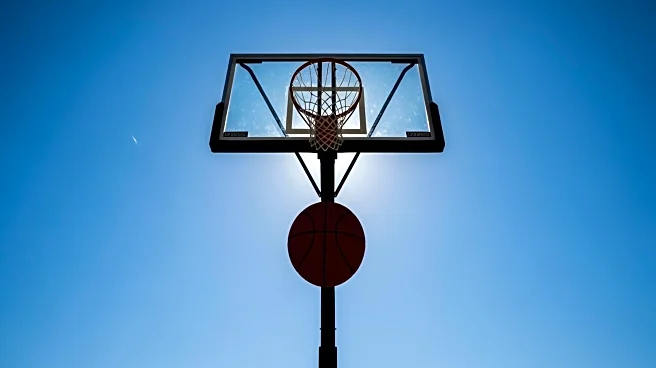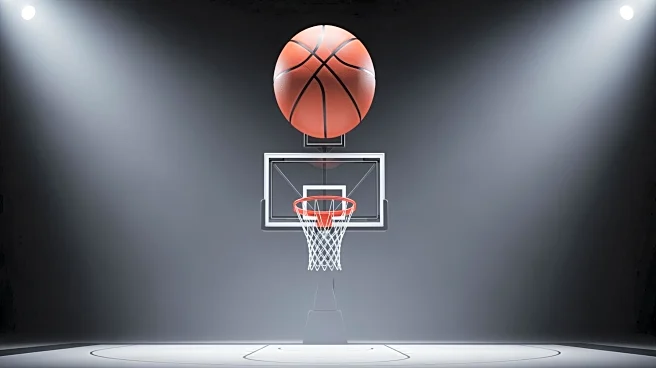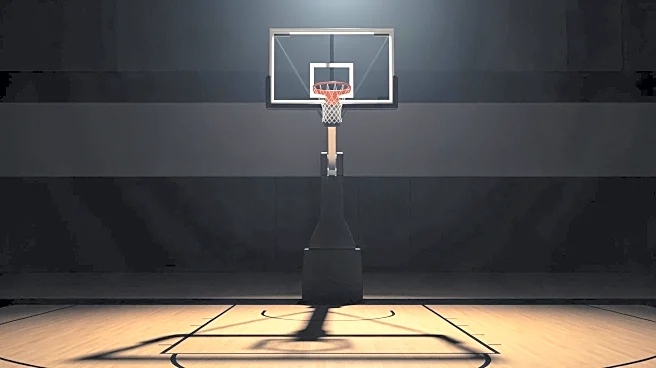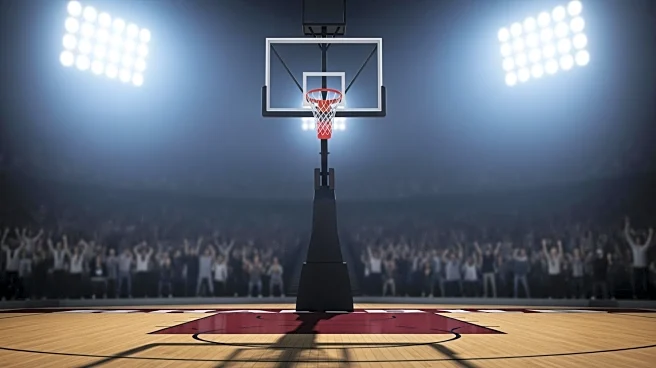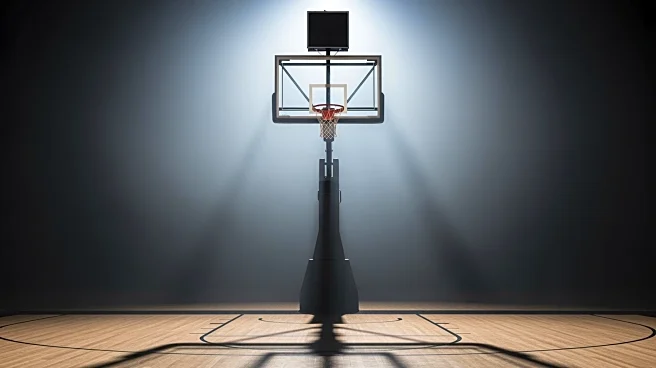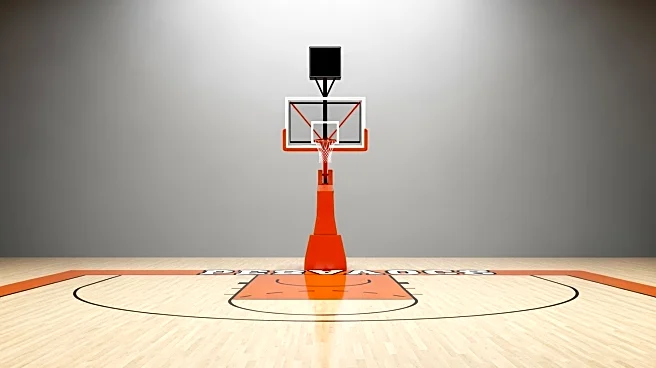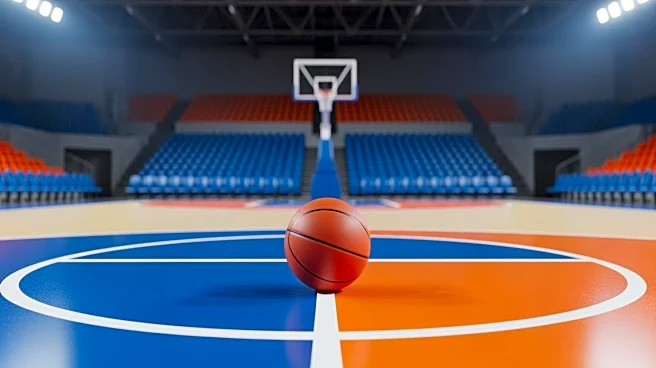What's Happening?
Olivier Rioux, a 7-foot-9 center for the Florida Gators, made history by becoming the tallest player ever to participate in a college basketball game. Rioux, a redshirt freshman from Canada, debuted in Florida's
104-64 victory over North Florida. His entry into the game was met with enthusiastic chants from fans, highlighting the anticipation surrounding his participation. Despite not handling the ball during his brief appearance, Rioux's presence was a significant moment for the team and the sport. Coach Todd Golden had planned Rioux's debut for a blowout situation, allowing him to experience the game without pressure.
Why It's Important?
Rioux's debut as the tallest player in college basketball history is a landmark event that underscores the potential for athletes with unique physical attributes to impact the sport. His presence on the court challenges conventional ideas about basketball and highlights the importance of inclusivity in athletics. Rioux's journey from redshirting to making history reflects the strategic development of players with exceptional characteristics, offering insights into how sports teams can leverage diverse talents. This event enhances the visibility of Florida's basketball program and sets a precedent for future players with extraordinary physical traits.
What's Next?
As Rioux continues to develop his skills, he may become a more significant contributor to the Florida Gators' strategy, particularly in games where his height can be advantageous. Coach Todd Golden's approach to playing Rioux in specific situations suggests a careful integration into regular gameplay, allowing him to grow without undue pressure. The team's performance and Rioux's progress will be closely monitored, potentially influencing recruitment strategies and game tactics. Rioux's development could also inspire other athletes with unique physical attributes to pursue sports, broadening the scope of talent in collegiate athletics.
Beyond the Headlines
Rioux's debut prompts discussions about the evolving nature of basketball and the role of physical diversity in sports. His presence challenges traditional notions of athleticism and may inspire conversations on how sports organizations can accommodate and nurture players with unique physical attributes. Rioux's journey may influence young athletes with similar characteristics, encouraging them to pursue sports despite potential challenges. The cultural impact of his debut could extend beyond basketball, prompting broader conversations about inclusivity and representation in athletics.
